MISSION MANTA

IN THE GLASS-CLEAR WATERS OFF THE MALDIVES' Raa Atoll, something akin to an underwater circus is taking place. The manta rays that have gathered near our boat streak through the water, unfurling their wings as they perform barrel rolls, somersaults and sudden dives. They disappear into the depths before magically reappearing, mouths agape and cephalic fins (horn-like structures used for feeding) curled as they gulp down tiny plankton invisible to the naked eye.
Watching marine biologist Jess Haines in action is no less impressive - even more so given she hasn't been blessed with the ability to breathe underwater. Jess trails the manta rays as they perform their acrobatics, snapping pictures of their undersides.
Manta ray bellies, known as 'ventral surfaces', each bear a unique pattern of spots that act much like a human fingerprint. In the absence of tags, which are banned in the Maldives, photos enable scientists to identify every individual and thus monitor movements, population dynamics and feeding and breeding hotspots. Given that manta rays are now listed as Threatened by the IUCN, with populations increasingly affected by over fishing and by catch, this is vital research.
Jess's love affair with mantas began after she completed her zoology degree. Arriving in the Maldives in 2017 to work as a marine biologist and dive instructor on Dhaalu Atoll, she saw - and fell in love with - reef manta rays, the smaller of the two manta species. She started sending photos of individuals she encountered to the Manta Trust, a conservation organisation founded in 2011, helping to build a database in an area where it had no staff. In 2019, she joined the team as manager of the Maldivian Manta Ray Project. Protecting these spectacular marine creatures was now her day job.
Diese Geschichte stammt aus der July 2023-Ausgabe von BBC Wildlife.
Starten Sie Ihre 7-tägige kostenlose Testversion von Magzter GOLD, um auf Tausende kuratierte Premium-Storys sowie über 9.500 Zeitschriften und Zeitungen zuzugreifen.
Bereits Abonnent ? Anmelden
Diese Geschichte stammt aus der July 2023-Ausgabe von BBC Wildlife.
Starten Sie Ihre 7-tägige kostenlose Testversion von Magzter GOLD, um auf Tausende kuratierte Premium-Storys sowie über 9.500 Zeitschriften und Zeitungen zuzugreifen.
Bereits Abonnent? Anmelden
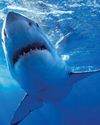
JAWS 50 THE LEGACY
Half a century after a great white shark terrified cinemagoers, we hunt down the lasting impacts of Spielberg's blockbuster
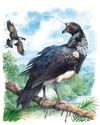
PRIMAL SCREAM
A wildly unusual bird call shatters the peace of a tropical dawn
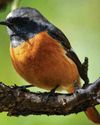
Find more birds more of the time with multi-spectrum binoculars from HIKMICRO
Find more birds more of the time with multi-spectrum binoculars from HIKMICRO
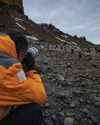
Losing touch with reality
As AI becomes increasingly powerful, what does it mean for the wildlife images we see?

Bongos have come home
The secretive antelope is hoping for better times in Kenya

Do animals get stressed?
We often think of stress as a bad thing, but it has evolved to protect us. When we find ourselves in life-threatening situations, our bodies prepare to fight or run.
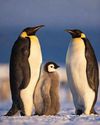
Secrets of the Penguins
New series for National Geographic offers unprecedented insight

How I learned to speak wolf
Deep in Yellowstone's Lamar Valley, George Bumann develops a sense of what wolves' howls can mean
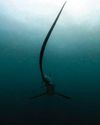
Which animal has the longest tail?
STRICTLY SPEAKING, THE TAIL-LIKE structures found in everything from scorpions to mayflies are not true tails. Only vertebrates – animals with a spine – are genuine tail-owners. And among vertebrates, tails are really common.

Lesser goldfinches are moving north
Warmer temperatures are leading these irrepressible golden-hued birds to expand their range in the USA
